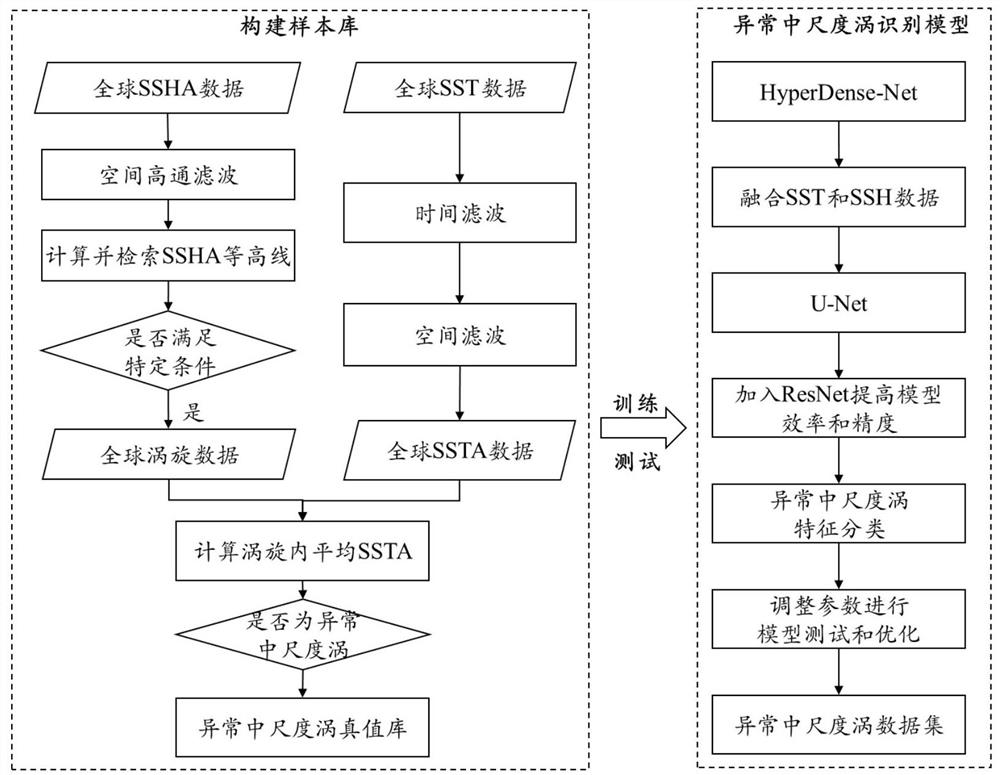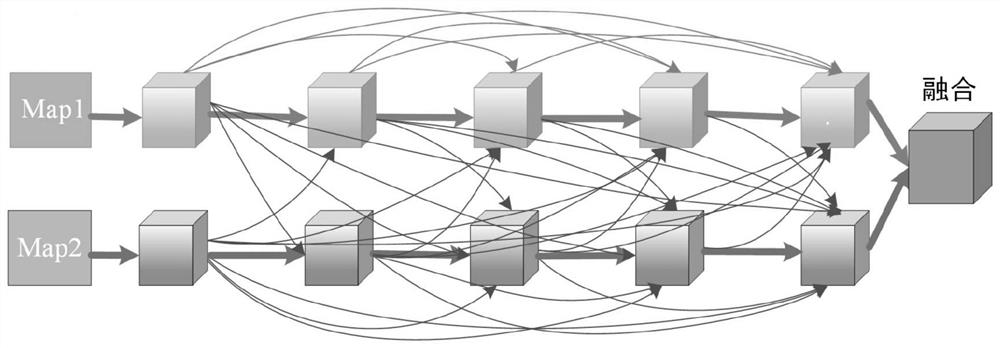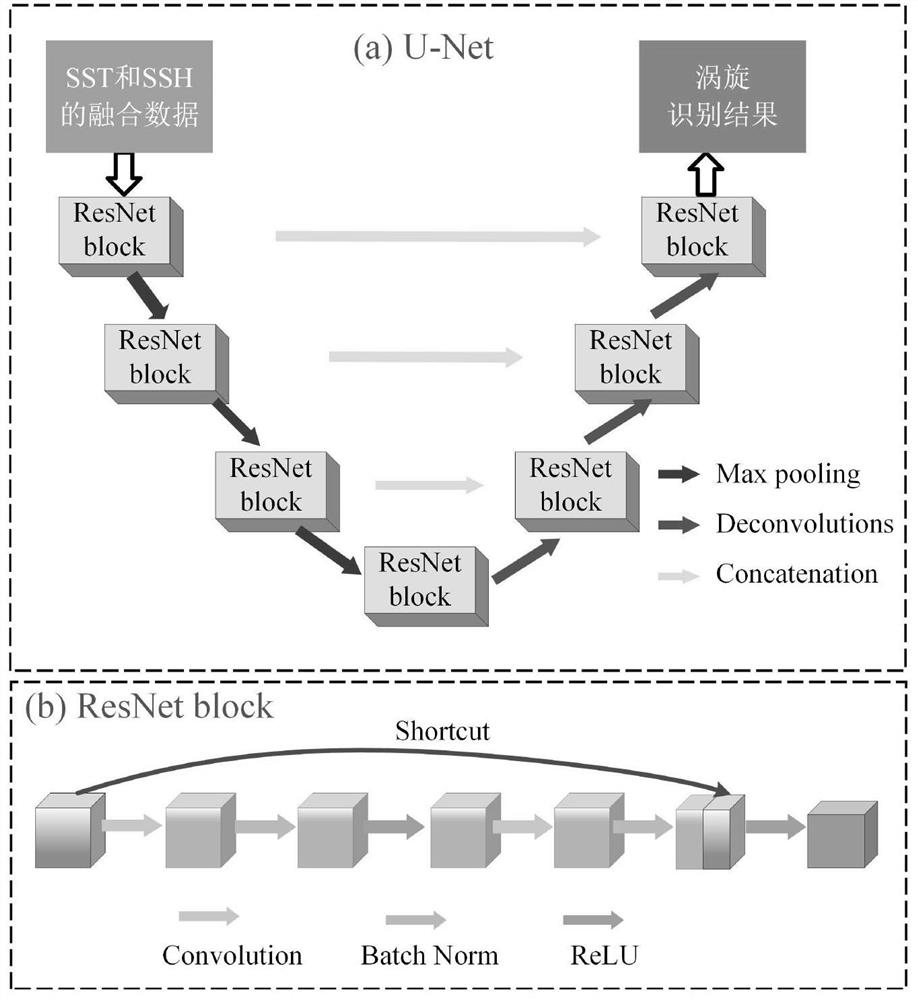Deep learning and multi-source remote sensing data-based ocean anomaly mesoscale eddy identification method
A recognition method and deep learning technology, applied in neural learning methods, character and pattern recognition, image data processing, etc., can solve problems such as unclear generation mechanism and insufficient understanding of spatio-temporal distribution characteristics
- Summary
- Abstract
- Description
- Claims
- Application Information
AI Technical Summary
Problems solved by technology
Method used
Image
Examples
Embodiment 1
[0035] A method for identifying marine anomalous mesoscale eddies based on deep learning and multi-source remote sensing data, the method includes the following steps, such as figure 1 Shown:
[0036] S1. Construction of a mesoscale anomalous vortex sample library:
[0037] ①Extract mesoscale eddies: extract mesoscale vortices based on SSHA data; first perform high-pass filtering on the global SSHA with a radius of 5° (latitudinal) and 10° (longitudinal) to remove large-scale signals, and then conduct SSHA contours Search and filter. If the closed SSHA contour line meets the following conditions: a) There is only one extreme point in the contour line, and the extreme point refers to the pixel where the maximum or minimum value of the eight neighbors is located; b) The number of pixels in the contour line Not less than 8; c) Vortex amplitude, that is, the difference between the SSHA value of the contour line and the value of the extreme point in the contour line, not less tha...
Embodiment 2
[0055] Anomalous mesoscale eddies were identified based on observational data of SSHA and SST remote sensing data in the global ocean (90°S-90°N, 180°W-180°E).
[0056] 1. Based on the HyperDense-Net model, the SSHA and SST data are cascaded in a densely connected manner to achieve the fusion of SST and SSHA features at different levels. HyperDense-Net is a network model developed based on densely connected networks to solve multimodal fusion ( figure 2 ), its forward propagation can be expressed by formula (1):
[0057]
[0058] In formula (1), x is a single network layer, the superscript s indicates which mode the network layer is in, and the subscript l indicates the network layer. function It is a compound operation function of batch normalization function (Batch Normalization, BN), activation function ReLU, and convolution operation (Conv). HyperDense-Net adds the direct connection of any layer to all subsequent layers in a forward manner, this dense connection no...
PUM
 Login to View More
Login to View More Abstract
Description
Claims
Application Information
 Login to View More
Login to View More - R&D
- Intellectual Property
- Life Sciences
- Materials
- Tech Scout
- Unparalleled Data Quality
- Higher Quality Content
- 60% Fewer Hallucinations
Browse by: Latest US Patents, China's latest patents, Technical Efficacy Thesaurus, Application Domain, Technology Topic, Popular Technical Reports.
© 2025 PatSnap. All rights reserved.Legal|Privacy policy|Modern Slavery Act Transparency Statement|Sitemap|About US| Contact US: help@patsnap.com



